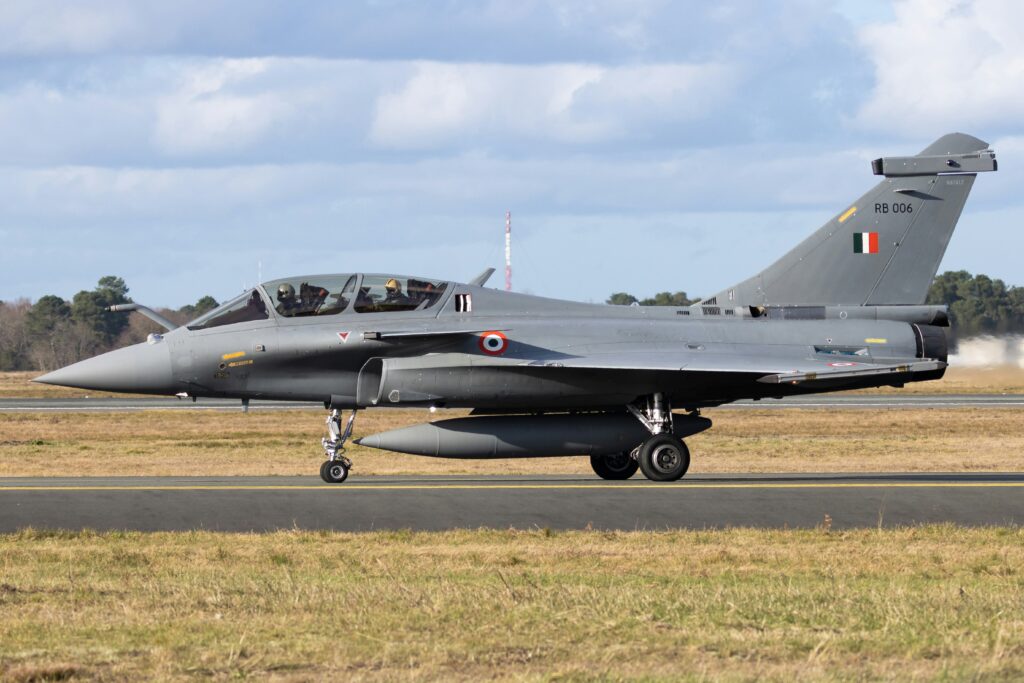
Grounded Ambitions: How India’s Air Force Is Losing Altitude
India’s Air Force Is Running on Fumes — And Strategy Isn’t Helping
India is running out of fighters faster than it can build or buy them.
The Indian Air Force (IAF) today faces a crisis that’s been decades in the making — a dangerous mix of policy drift, bureaucratic indecision, and manufacturing delays that have left one of the world’s largest air forces short of both aircraft and direction.
For a nation surrounded by nuclear-armed adversaries and unstable borders, that’s not just a problem — it’s a vulnerability.
Forty-Two Squadrons on Paper. Barely Thirty in Reality.
India’s air defense doctrine calls for 42 combat squadrons. Right now, the IAF can muster barely 30 — and that number is shrinking.
The recent retirement of the MiG-21 “Bison” fleet, long overdue after decades of service and safety concerns, has further reduced squadron strength. Instead of being seamlessly replaced by Tejas or Rafales, those squadrons have simply vanished. The IAF today is flying fewer combat aircraft than it did twenty years ago — even as its threat environment has grown more complex.
The Tejas Dream: Delayed by Design
The Tejas Light Combat Aircraft (LCA) was supposed to be India’s big leap toward self-reliance. Instead, it’s a case study in how timelines collapse under bureaucracy.
HAL’s production line has struggled to deliver more than a handful of aircraft each year. The Tejas Mk1A variant, meant to replenish depleting squadrons, is already facing setbacks due to delays in the delivery of GE’s F-404 engines, which power the fleet.
Meanwhile, the next-generation F-414 engine, slated for the Tejas Mk2, remains on paper despite being announced with much fanfare in 2023. When an “indigenous” aircraft can’t fly without delayed imported engines, self-reliance becomes a slogan, not a strategy.
Procurement Paralysis: The Ghost of MMRCA
India’s procurement playbook is equally adrift. The once-ambitious MMRCA deal for 126 fighters was supposed to fill the fighter gap quickly. Two decades later, India has only 36 Rafales — world-class aircraft, but too few to shift the balance.
The successor program, MRFA (Multi-Role Fighter Aircraft), remains stuck in bureaucratic quicksand. Every government relaunches it with new names, new slogans, and the same indecision. In the meantime, squadrons retire, capabilities fade, and the IAF is forced to stretch existing assets well beyond their intended lifespan.
This isn’t modernization — it’s managed decline.
A Shrinking Edge in the Skies
While India dithers, its rivals act.
China has transitioned to 5th-generation stealth fighters like the J-20 and is rapidly integrating drones and electronic warfare assets into its combat network. Pakistan continues to modernize with J-10C and advanced JF-17 variants through Beijing’s support.
The IAF, by contrast, is relying on stretched fleets and delayed deliveries. You can’t deter with promises — only with presence.
The F-35 and Su-57 Dilemma: Tempting but Complicated
With the IAF’s fighter gap widening, attention has turned to possible “next-generation” stopgaps — namely the American F-35 Lightning II and Russia’s Su-57 Felon. Both look appealing on paper, but neither is a silver bullet.
The F-35 Option
- Pros:
- Unmatched stealth, avionics, and network integration.
- Access to the world’s most advanced logistics and targeting systems.
- Long-term interoperability with U.S. allies and partners in the Indo-Pacific.
- Cons:
- Politically sensitive — Washington’s approval process is stringent, and India’s continued defense ties with Russia could complicate access.
- Enormous maintenance and lifecycle costs; the jet’s sophistication demands an industrial base India doesn’t yet have.
- Integrating the F-35 into India’s diverse fleet (Rafales, Su-30MKIs, Tejas) could create logistical chaos.
The Su-57 Option
- Pros:
- Familiarity with Russian systems and lower acquisition cost.
- Potential for local assembly or technology transfer on favorable terms.
- Easier integration with existing Russian-origin platforms.
- Cons:
- The Su-57 remains unproven in combat and plagued by production and reliability issues.
- Russia’s industrial limitations post-Ukraine war make delivery timelines doubtful.
- Continued over-dependence on Moscow risks isolating India from Western defense ecosystems.
In truth, both options are double-edged swords — one politically constrained, the other operationally uncertain. Either way, India’s real problem isn’t which fighter to buy next; it’s the absence of a coherent, long-term strategy guiding those decisions.
The Path Forward: Less Talk, More Turbines
India doesn’t need another slogan or white paper. It needs engines, aircraft, and deadlines. The IAF, HAL, DRDO, and the private sector must stop working at cross-purposes and start delivering at scale.
- Lock in binding delivery schedules for Tejas and GE engines.
- Expand private manufacturing from token offsets to full participation.
- Fast-track MRFA, even as indigenous projects mature.
- Fund the AMCA, but ensure it’s guided by operational urgency, not bureaucratic optimism.
The Bottom Line
The MiG-21 has finally retired — but so has the illusion that India can keep deferring hard choices. The GE engine delays, the Tejas backlog, and the endless procurement loops all point to one uncomfortable truth: India’s airpower deficit is now a strategic liability.
The IAF doesn’t lack courage, or competence — it lacks consistency.
If India wants to command the skies of the future, it must first master the discipline of delivery. Because air superiority isn’t inherited. It’s built, one deadline at a time.
*Photo of IAF Rafale by Vincent Genevay downloaded from unsplash.com



